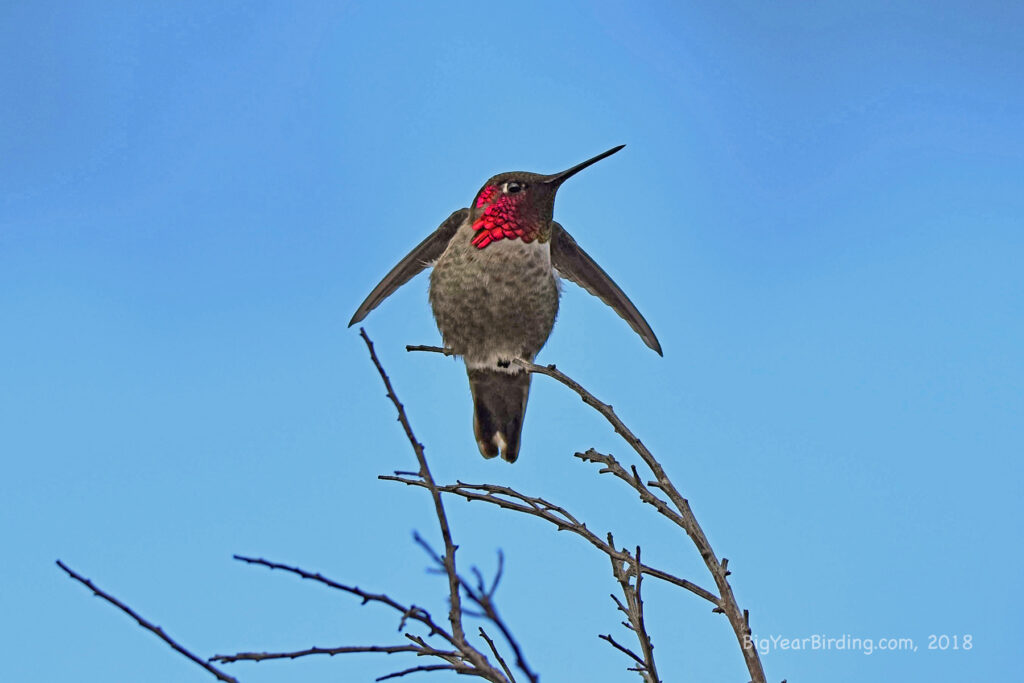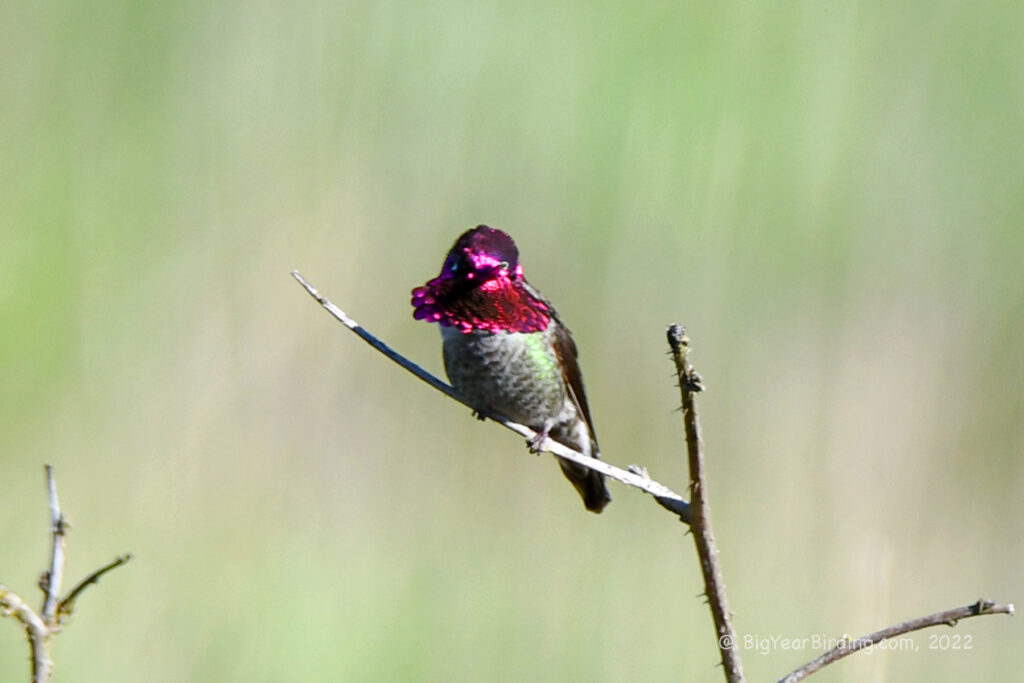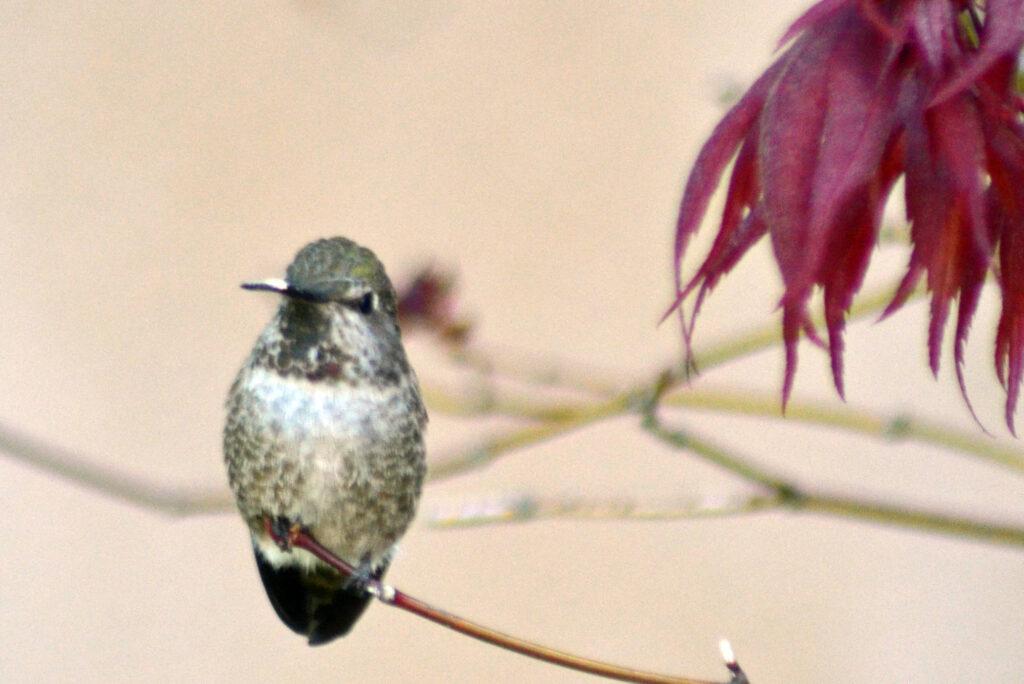
Anna’s Hummingbird is a small, iridescent bird found along the west coast of North America, from southern Alaska to Baja California in Mexico. It is a resident bird and does not migrate, although some individuals may move to lower elevations during the winter. The bird is named after Anna Masséna, Duchess of Rivoli, a French noblewoman and bird collector.
Anna’s Hummingbird is about 3.9 inches long and weighs about 0.1 ounces. Males are slightly larger than females, with a length of up to 4.3 inches and a weight of up to 0.14 ounces. The bird has a short bill, a relatively large head, and a long, tapered tail. Its wings are short and round, and it has a small, thin body. The plumage of the bird is highly iridescent, with a metallic green back and crown, and a rose-pink throat and head.
One of the distinguishing field marks of Anna’s Hummingbird is its iridescent rose-pink throat patch, known as a gorget. The gorget is highly reflective, and its color varies depending on the light angle. The males have a more extensive and vibrant gorget than the females, which have a grayish-pink throat. The bird’s wings also produce a distinctive buzzing sound during flight, caused by the rapid flapping of its wings, which can beat up to 80 times per second.
Anna’s Hummingbirds are typically found in gardens, parks, and woodland areas with a lot of flowers, especially those with red or pink blooms, which are their primary food source. They feed on nectar and small insects and spiders. The birds breed throughout the year, with males performing elaborate courtship displays, including aerial displays and vocalizations. The female builds a small, cup-shaped nest made of plant fibers, moss, and spider silk, and lays two eggs, which she incubates for about two weeks.
In conclusion, Anna’s Hummingbird is a small, iridescent bird found along the west coast of North America. It is known for its metallic green and rose-pink plumage, with a distinctive iridescent gorget on its throat. The bird is a resident species and does not migrate, and can be found in gardens, parks, and woodland areas with flowers. The bird feeds on nectar and small insects and spiders, and breeds throughout the year, with females building small cup-shaped nests and laying two eggs.

